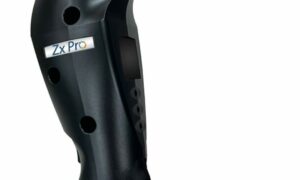 There is a good chance your exam room has gone high-tech, results from Jobson Optical Research’s 2013 ECP Internet Usage Study suggest. Some 75.2 percent of respondents report using a laptop or desktop computer in the exam room, while 60.2 percent say they use apps in the exam room, and 58.8 percent report using a smartphone in the exam room. Meanwhile, 50.7 percent say they use an iPad or tablet, and 19.4 percent use a TV screen in the exam room.
There is a good chance your exam room has gone high-tech, results from Jobson Optical Research’s 2013 ECP Internet Usage Study suggest. Some 75.2 percent of respondents report using a laptop or desktop computer in the exam room, while 60.2 percent say they use apps in the exam room, and 58.8 percent report using a smartphone in the exam room. Meanwhile, 50.7 percent say they use an iPad or tablet, and 19.4 percent use a TV screen in the exam room.
Click HERE to purchase Jobson Optical Research’s 2013 ECP Internet Usage Study report.
Will technology cause you to be more patient centered or less patient centered? This is one of the core questions for the 21st century eyecare practice. So far, many doctors feel that the introduction of electronic health records (EHR) causes them to be less patient centered in the exam room. Patients have even stated that the doctor spends more time looking at the screen than looking at them.
The addition of EHR is only the beginning. More and more of exam technology is being linked together electronically. The technology itself is becoming more sophisticated. With mobile apps and wearable monitoring technology, the contributions of patients to EHR is about to explode. The additional technology that is already here or coming soon to the practice can get overwhelming quickly.
Don’t forget the Affordable Care Act, with its narrowed networks as a driver, expecting us to see more patients for potentially less reimbursement per unit of time. Using technology we can see more patients in less time, but do we do it at the expense of a patient-centered approach?
In this environment, it’s easy to let technology become the focus rather than the patient. Don’t let that happen. It’s time to step back and get a better perspective. Technology should be a tool helping us deliver better patient care in a more patient-centered way. If it is not being used this way, then we need to make changes. Here are two changes to the use of technology in your practice to become more patient centered.
1) The doctor should become less of a data gatherer and more of a data analyzer. When staff uses technology to do most of the exam, and the doctor concentrates on the analysis of the results, creation of a treatment plan and the communication of the treatment plan to the patient, the doctor-patient relationship is enhanced.
2) Using a scribe in the exam room helps keep the exam patient centered. Using a scribe permits the doctor to face the patient while the scribe adds to the record. The focus of the doctor in the exam room is the patient, not the technology. Technology use in the exam room is primarily a tool (or tools) being used by the doctor to communicate with the patient.
Do you need to make any changes to your practice? Your action plan for this week is to answer these four questions to find the answer:
1) Ask the next 100 patients coming through your practice these two questions:
a. “What did you like best about your eyecare experience today?”
b. “What could we have done to make your eyecare experience better today?”
2) Can you use technology in your practice more effectively to free up the doctor to be more of a data analyzer?
3) Have you created systems in your practice making the use of technology seamless and easy?
4) Does the doctor spend at least 80 percent of the time in the exam room looking directly into patients’ eyes while communicating in a patient-centered way?
Once you have the answers to these four questions, your path forward should be clear.



























